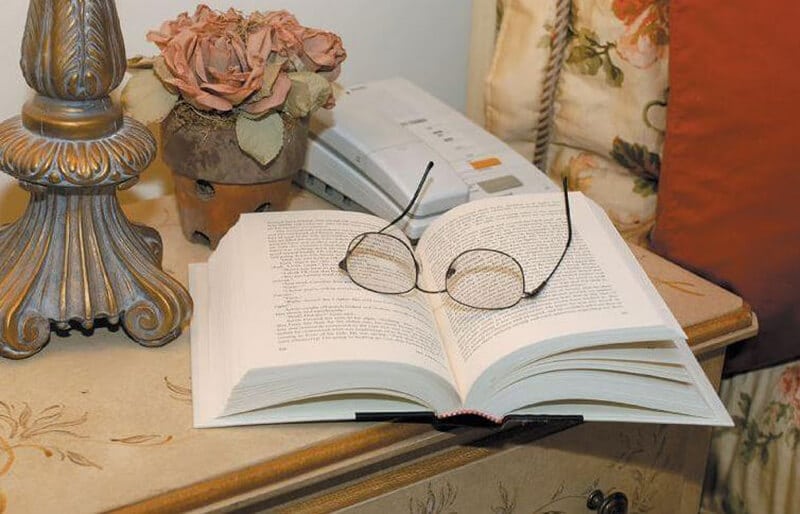The illusion. The tawdry glamour. The delicate balance between illusion and reality, a glittering spectacle and its dark underbelly. And above all, the wonder. It’s little surprise that novelists have been inspired by the circus since it first rolled into town, from Charles Dickens in Hard Times and The Old Curiosity Shop (“Dear, dear, what a place it looked, that Astley’s; with all the paint, gilding, and looking-glass”) to Angela Carter and her magnificent and bawdy invention, Sophie Fevvers.
As a setting, the circus is an irresistible place to explore power and control. After all, the showman’s job is to misrepresent, to spin outlandish stories, to hold a crowd in raptures. When I started writing Circus of Wonders, it quickly became a book about storytelling and appropriation. It is set in the booming age of the Victorian circus and so-called “freak show”, when showmanship exploded, when new inventions meant that fame could spread like wildfire, when little people and bearded women became rich and celebrated, when even Queen Victoria became known as “the freak-fancier”.
And with the circus’s focus on illusion and storytelling, it became the ideal setting to ask: who holds the pen? Whose voice is heard and whose is silenced? How far are we are willing to go in order to entertain? All of these books and collections are feats of the imagination, where the author’s hand never falters, and which cut through the dazzling trickery of showmanship with often devastating effect.
1. Nights at the Circus by Angela CarterOh, what a novel! Carter called it “psychedelic Dickens”, and the whole novel is a feast for the senses. The imagery is so lurid, the metaphors and double entendres so heaped, the quips so sharp and bawdy, that it almost leaves the reader queasy. While these are the qualities I most admire about Carter’s prose, I also loved it for how it played with reality and illusion. Sophie Fevvers, a winged aerialiste, is a cockney virgin, hatched from an egg. Or is she? The prosaic quest for truth is filtered through the journalist Jack Walser, an ingenious addition – insisting on reporting and facts, he longs to pin her down – but Fevvers will not be contained by convention, and joyfully takes up space. She chatters at length, fills the room with her scent and laughter and gestures, and exuberantly plays with the boundaries between fairytales and reality. This is the definitive book about the circus, and really, the definitive book about being alive.
2. The Girl Aquarium by Jen CampbellThis blistering poetry collection explores showmanship, the so-called freak industry, fairytales and spectacle – and, in fact, it doesn’t so much unpick these things as smash them to pieces and make them new. We meet “girls with beetle eyes” on display in a girl aquarium, captured mermaids held behind glass, a Bear Lady and Skeleton Man sipping beer. I love so much about it: how it kicks against tropes of disfigurement, how science jostles against fantastical circus, how it explores the way in which girls’ bodies can be sites of both self-discovery and exploitation. It is defiant, bold, brilliant. As the penultimate poem states, “Smash this circus to the ground”.
3. Beneath the Big Top: A Social History of the Circus in Britain by Steve WardThis compact history is crammed with interviews, eye-witness accounts and facts so outlandish that even the most imaginative novelist couldn’t top them. Ward offers nuggets about Henry Kraul, the showman whose head was torn off by his pet lion; about George Wombwell’s escaped tigress who killed a young boy, a woman and a baby; and about the numerous conflagrations that have reduced tents and amphitheatres and circus rings to ash.
4. Josser: The Secret Life of a Circus Girl by Nell Stroud“The circus does cast a spell over some people. I felt overwhelmed by it. The circus filled up existence and left room for nothing else. What was there to do?” After leaving Oxford, Stroud did what many dream of doing but do not dare: she joined a travelling circus. Her memoir, told with great tenderness and spirit, helped me understand the excitement, the grime, the exhaustion, the belonging, of being part of a performing troupe. She went on to co-found Giffords Circus, entertaining more than a million people and travelling all over the world. It left me astounded by the singularity of her life and how much she crammed into it, made even more poignant by her early death in 2019.
5. The Wonders: Lifting the Curtain on the Freak Show, Circus and Victorian Age by John WoolfMany will be unaware of how vast and booming the so-called freak industry was in mid-Victorian Britain, and how extraordinary and tragic and magnificent the lives of many of its performers were. In this remarkable social history, John Woolf recounts the lives of its biggest stars – for example conjoined “Siamese” twins Chang and Eng Bunker; former slave Joice Heth who was exploited by the showman PT Barnum; and little person Charles Stratton (known as “General Tom Thumb”), who, in the opening chapter, meets Queen Victoria. While Woolf acknowledges the opportunities offered to those that society shunned, he does not shy away from denouncing the exploitative nature of the industry – a world that could both offer freedom and take it away.
6. The Electric Woman by Tessa Fontaine“The trick is there is no trick. You eat fire by eating fire.” In her memoir, Fontaine recounts how she trained as an escape artist, a fire-eater, a snake charmer. In doing so, she looks at the darker side of the circus and how to overcome it – specifically, her battle to ignore fear and danger, and participate in death-defying stunts. Like Josser, it’s an astonishing account of life in a circus, and the camaraderie, eccentricity and storytelling ways of its performers.
7. Patient by Bettina JuddJoice Heth. Sarah Baartman. Betsey Harris. These are just three of the names of the black women who have been exploited and assaulted through history, their bodies violated as sites of curiosity and science, and whom Bettina Judd takes as the core of her unforgettable poetry collection. Like many narratives about showmanship that explore how the voices of the performers or the patients have been lost and overwritten, this collection returns the power of storytelling to those who were denied it, imagining their voices in conversation with a modern speaker.
8. The Circus 1870s-1950sThis nonfiction book is a trove of circus photographs, posters, lithographs, sideshow banners and engravings. When I found it in a library, I was so enchanted and inspired by the images inside – sequined girls smoking on circus wagons, Frank A Robbins firing a woman from a cannon – that I had to buy my own copy. It brings to life the grit and glamour of the circus, cataloguing photographers such as Frederick Whitman Glasier, Edward Kelty and Cornell Capa. As I turned each page, it was impossible not to ask the question that drives me to write: what would that have felt like?
9. The Night Circus by Erin MorgensternThis novel takes the illusion and intrigue of the circus and turns it into a fantasy, where magic becomes real and showmen wield dark powers. Le Cirque des Rêves glitters with imaginative delights – cloud mazes and gardens made of ice – but it is the combat between two rival magicians (and their lovestruck pawns) where the novel examines the darker, more controlling side of the show.
10. Water for Elephants by Sara GruenSet in the US during the Great Depression, this novel begins almost like Nell Stroud’s memoir: Jacob Jankowski leaves university and joins the Benzini Brothers’ Most Spectacular Show on Earth. The book weaves together romance between Jacob and the equestrian star Marlena; jeopardy in the form of August, the circus’s controlling animal trainer; and tenderness in the form of Rosie, a performing elephant whom Jacob adores.
-
Circus of Wonders by Elizabeth Macneal is published by Picador. To order a copy, go to sachvui.co.



